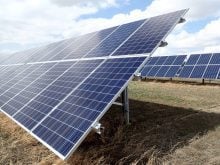Two years ago, food price inflation was rampant, with monthly year-over-year increases in excess of 10 per cent.
Statistics Canada’s Consumer Price Index for March indicated the price for a basket of food dropped by $8.42 from the same basket in February. The total basket cost in February was $630.88 and $622.46 in March. This $8.42 is a decrease of 1.3 per cent.
Statistics Canada reports a national decrease in grocery costs but that doesn’t seem to be the case.
Read Also

High prices see cow-calf producers rushing to incorporate
Farm accountants are reporting a steady stream of cow-calf producers rushing to get their operations incorporated ahead of selling their calves this fall.
Wholesale stores and their jumbo packs of goods are a glimpse at true grocery wholesalers who buy food items to be sold to these stores.
The difference between the wholesale cost of bundled food items and the per-item cost in grocery stores can be staggering. As an example, a case of English cucumbers wrapped in cellophane has a wholesale price of $5 per case for 16 or 34¢ each. In a typical grocery store, these same English cucumbers sell for up to $2 each.
A case of 60 seedless watermelons has a wholesale price of $425, or $1.18 per watermelon. Depending on the grocery chain and location, retail prices can be upward of $10 each. These prices have been confirmed by a grocery purchase agent.
These product price mark-ups seem incredibly high. The English cucumbers are sold in stores at a price six times higher than the wholesale price and the watermelons sell at a price nine times higher. Retail prices are far higher than wholesale prices. But this isn’t the whole story.
The cost of food items is but one expense. Grocery stores have many fixed costs, such as wages, heating, electricity, equipment, insurance and lease costs. All are factored into the retail price of items.
How much of the retail price is used to cover the fixed costs and how much is profit? Ideally, finding that answer should be the role of the House of Commons agriculture committee, when in 2023, it investigated food price inflation.
Its report provided 13 recommendations to the federal government designed to help reduce food prices, but there has been virtually no reduction.
Retail profits have been substantial in the past year. For the quarter ending March 31, Loblaws reported income of $13.5 billion, with net earnings of $459 million. Loblaw’s 2023 financial report states that food retail sales increased by 3.9 per cent.
Sobey’s net earnings for its latest quarter were $134 million from sales of $7.5 billion. Metro reported net earnings of $187 million on sales of $4.6 billion.
These retail companies own much more than grocery stores. Loblaws has very diversified holdings, such as real estate, drug stores and financial institutions. There is no requirement for these firms to report revenues and profits for the different sectors of their corporate profile.
Additionally, there are no requirements to report sales and profits in grocery stores for directly consumable food items and non-food items. Profit margins on dog food, brooms, cookware, lightbulbs, cards and the many other items sold in grocery stores may be very different from those of food items but it’s difficult to know.
As part of the effort to better investigate profits within the grocery retail sector, I will work to undertake a thorough investigation of the price difference between wholesale and retail prices.
This work will be done over the next few months, with blogs published on SAIFood’s website after the summer break.
Stuart Smyth is an associate professor in the University of Saskatchewan’s agricultural and resource economics department. This article was first published on the SAIFood website. It has been edited for length.















